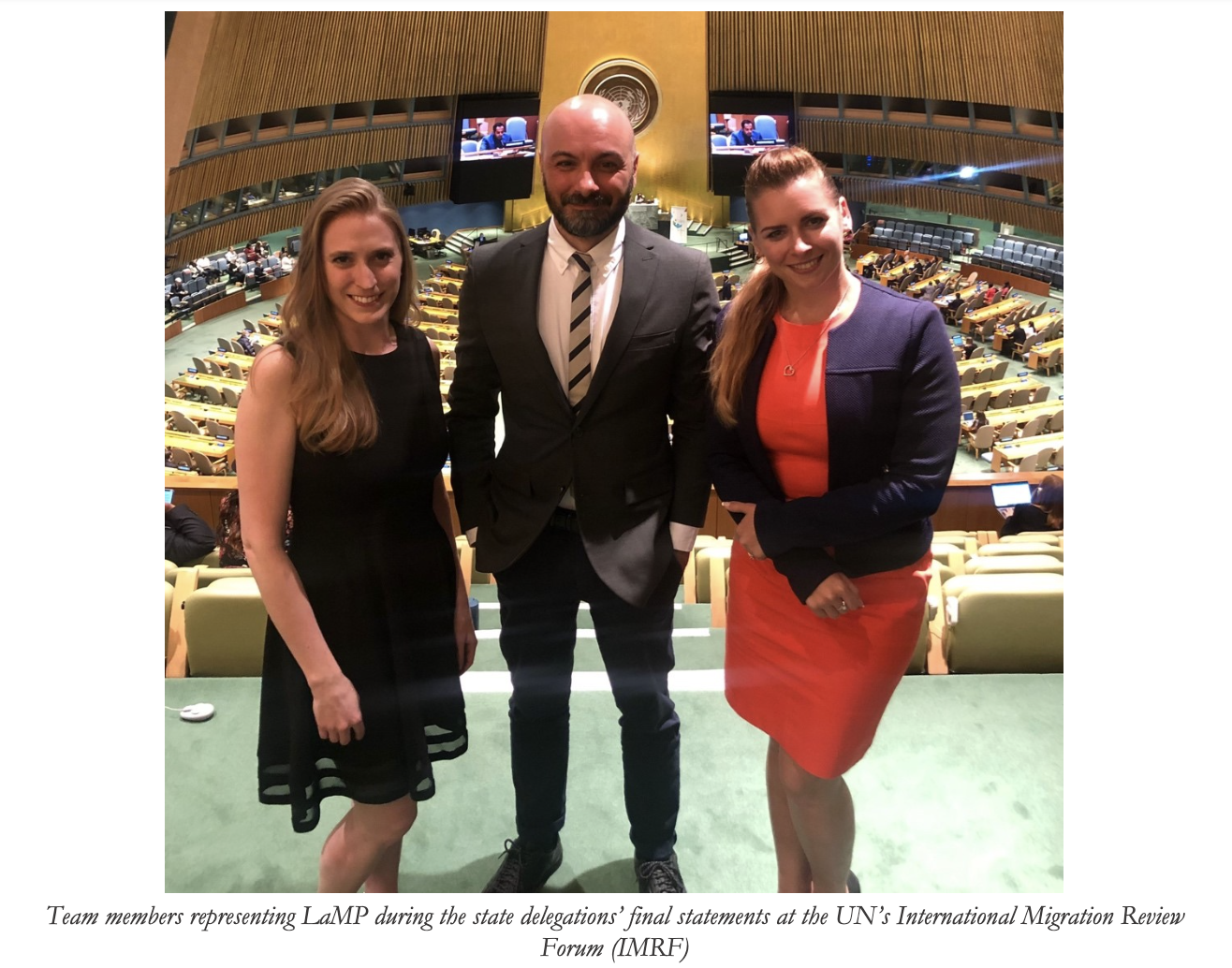FAVORITE MESSAGE:
Predictability is an essential element for the private sector to engage in sustaining safe and legal pathways for migrant workers. This seemingly simple idea has, however, proven to be challenging to accomplish in practice.
It is crucial to bring “doers” and “practitioners” on board to help develop actual practical solutions to address this as well as other labor mobility issues.
MAIN TAKEAWAY:
Predictability is an essential element for the private sector to engage in sustaining safe and legal pathways for migrant workers. This seemingly simple idea has, however, proven to be challenging to accomplish in practice.
It is crucial to bring “doers” and “practitioners” on board to help develop actual practical solutions to address this as well as other labor mobility issues.
The first ever International Migration Review Forum (IMRF) took stock of the progress made in the implementation of the Global Compact for Migration (GCM). However, the conversations stayed primarily at the “high” level with the majority of participants generally agreeing on broad areas where further improvements are necessary, but just a few conversations around concrete practical steps allowing for actual progress towards the GCM goals .
In order to understand the ‘nuts and bolts’ of good labor mobility pathways and practices, we need more room for the “doers” in the labor mobility sector to share knowledge and understanding of “HOW” to achieve the GCM goals. LaMP strives to bring the practitioners’ perspective to the international conversations and to partner with actors responsible for implementing quality mobility programs on the ground.

LaMP TEAM REFLECTION:
It was a pleasure to participate in the first ever IMRF held at the United Nations headquarters in New York city. The LaMP team got a chance to finally reconnect in person with long-standing allies and meet new potential partners, ranging from state ambassadors and government representatives to private sector bodies and civil society organizations. While we are excited about all the possible opportunities stemming from these connections, the main official debates seemed to remain at quite ”high” level, simply reviewing and analyzing the broad areas where further improvements are needed. As such, they did not bring many concrete solutions, which could lead us closer to accomplishment of the GCM goals.
More specifically, we heard from the private sector about the need to create more predictable labor mobility pathways that would allow employers to make sound decisions, since the complexity and constant changes within the existing corridors often act as disincentives to hire from abroad. However, the IMRF led to just a very few practical steps towards conceiving such pathways. Similarly, while the participants quite unanimously agreed on the need for more responsible recruitment practices, the debate basically stayed within the realm of regulations.
At LaMP, we use a distinctive “practice first” approach: rather than focus on designing perfect policies and assuming they will translate into practice, LaMP emphasizes solving problems on the ground to demonstrate good labor mobility practices that pave the way for better policy. In designing new models to work in practice from the outset, we take a multi-stakeholder approach, developing pragmatic solutions that address the interests of all actors. An example of this is our work on responsible recruitment in the US H-2A program, where we aim to help responsible recruiters build a competitive advantage over bad actors in the industry by strengthening their service offerings to employers and addressing capacity constraints.
For our field to move forward, we need practical solutions and concrete partnerships aimed addressing “nuts and bolts” problems in the implementation of quality mobility programs. LaMP is digging in here, and we hope you will join us!
